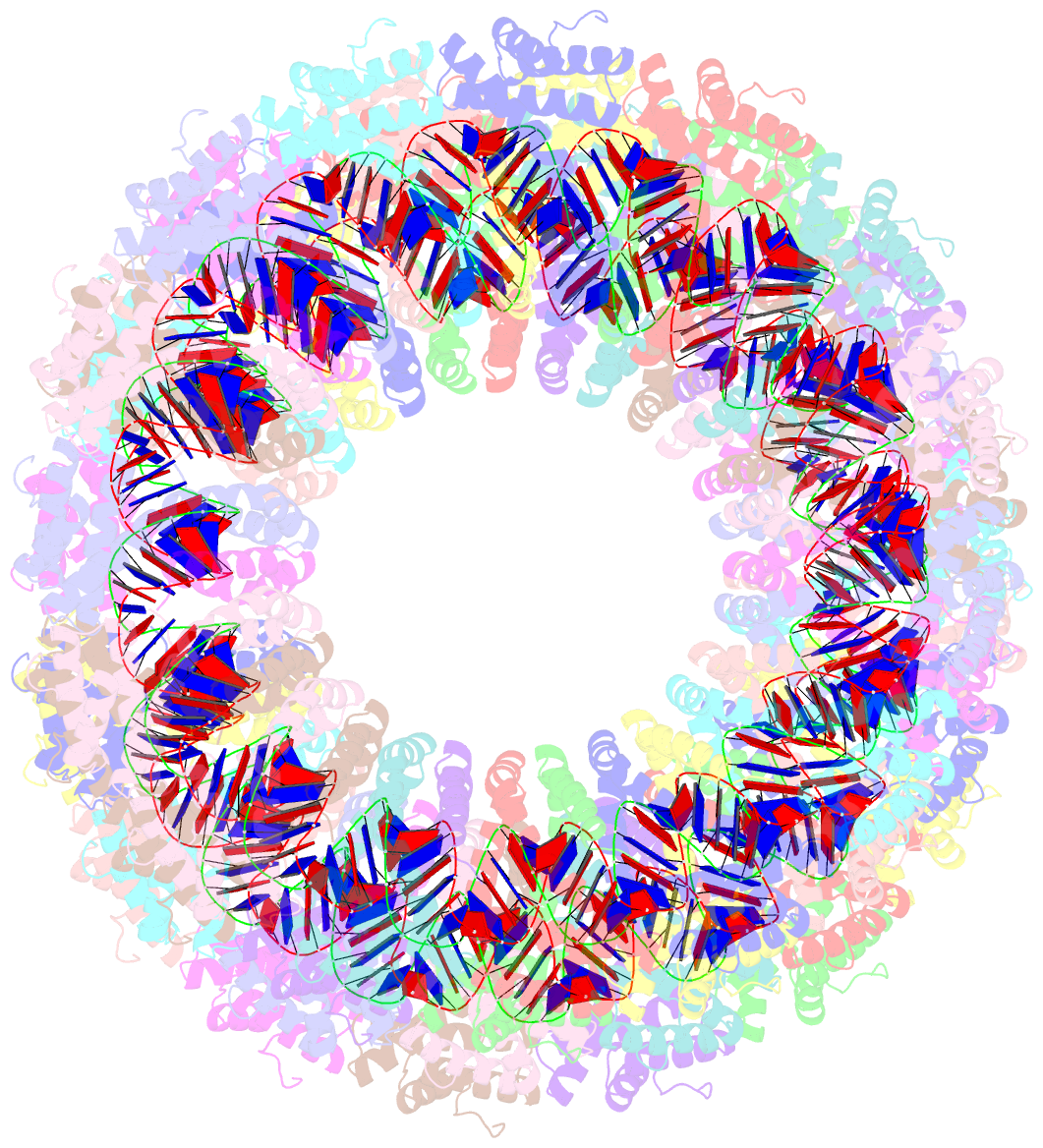Summary information and primary citation
- PDB-id
- 3j9x; SNAP-derived features in text and JSON formats;
DNAproDB
- Class
- virus
- Method
- cryo-EM (3.8 Å)
- Summary
- A virus that infects a hyperthermophile encapsidates a-form DNA
- Reference
- DiMaio F, Yu X, Rensen E, Krupovic M, Prangishvili D, Egelman EH (2015): "A virus that infects a hyperthermophile encapsidates A-form DNA." Science, 348, 914-917. doi: 10.1126/science.aaa4181.
- Abstract
- Extremophiles, microorganisms thriving in extreme environmental conditions, must have proteins and nucleic acids that are stable at extremes of temperature and pH. The nonenveloped, rod-shaped virus SIRV2 (Sulfolobus islandicus rod-shaped virus 2) infects the hyperthermophilic acidophile Sulfolobus islandicus, which lives at 80°C and pH 3. We have used cryo-electron microscopy to generate a three-dimensional reconstruction of the SIRV2 virion at ~4 angstrom resolution, which revealed a previously unknown form of virion organization. Although almost half of the capsid protein is unstructured in solution, this unstructured region folds in the virion into a single extended α helix that wraps around the DNA. The DNA is entirely in the A-form, which suggests a common mechanism with bacterial spores for protecting DNA in the most adverse environments.





